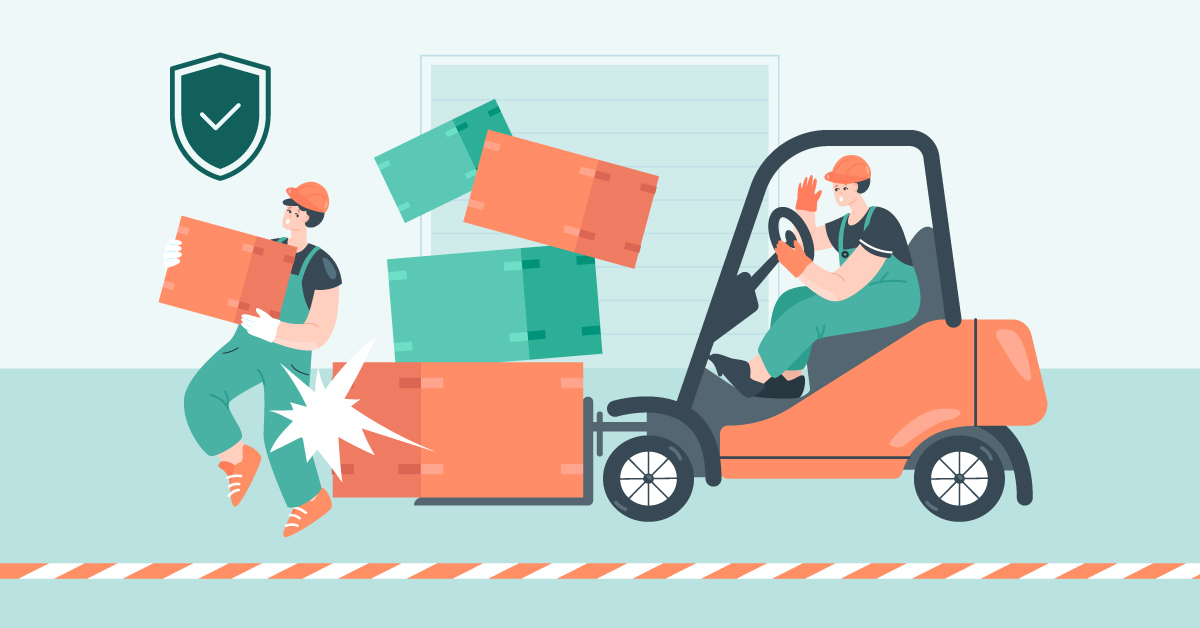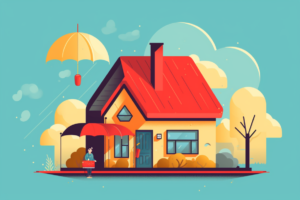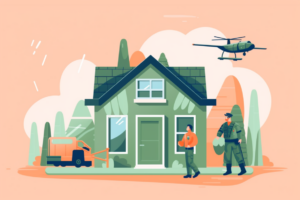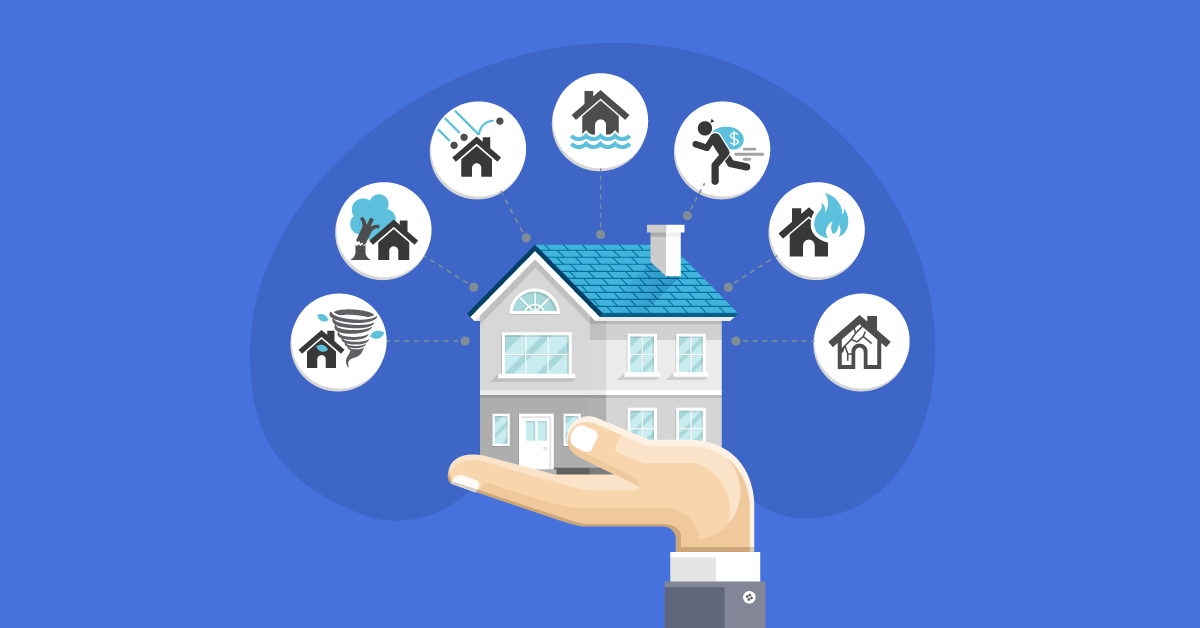Understanding what insurance coverage you require is part of buying a home. You’re probably already familiar with the need to purchase homeowner’s insurance, but hazard insurance is less well-known. Here, we’ll break down the definition and purpose of hazard insurance so you can stay informed and make the home-buying experience less stressful.
What Is Hazard Insurance?
Hazard insurance refers to the part of a homeowners insurance policy that covers damages to the physical structure of your home from certain disasters. It’s typically not available as a separate policy. If you are purchasing a home and applying for a mortgage, you must show proof of hazard insurance to your lender as part of your homeowner’s policy. Most lenders require hazard insurance to protect their investments.
Hazard Insurance vs. Homeowners Insurance
While hazard insurance is included in a homeowner’s insurance policy, they are slightly different. Homeowner’s insurance coverage includes your house, personal belongings, personal liability, medical costs for others injured on your property, and even living expenses if you need to move out during repairs.
Hazard insurance is a subsection of your homeowner’s policy and therefore is often mentioned separately. It refers specifically to the part that covers damages to the structure itself. It is sometimes called dwelling coverage.
What Does Hazard Insurance Cover?
Hazard insurance helps pay for damages to the structure of your home. The type of policy you have determines the covered events. Some include everything that isn’t named as an exclusion. Most are more limited and only cover specific “named perils” such as the following:
- Fire
- Lighting strikes
- Water overflow from plumbing or appliances
- Burst pipes
- Certain damages to the hot water, steam, air conditioning, or fire-protective systems
- Wind damage
- Hail
- Smoke
- Vandalism
- Heavy snow or ice
- Burst pipes
- Power surge
- Fallen trees and other objects
- Riots
- Volcanic eruptions
- Explosions
- Damage from vehicles or aircraft
Hazard Insurance Exclusions
It’s essential that you read the terms of your policy carefully to understand what is and is not covered. These are common exclusions you should know about:
- Normal wear & tear
- Flooding from rain and other external causes
- Landslides
- Mudslides
- Earthquakes
- Sewer backup
- War or nuclear action
- Intentional damage caused by the homeowner
The included coverage depends on where you live. Remember that hazard insurance only protects the home dwelling and potentially any garages or outbuildings located on your property. It does not include your possessions or injuries that occur.
It’s possible to purchase separate coverage for some of these excluded perils. Flood insurance is one of the most common and a good idea if you live in an area prone to flooding. Your mortgage lender might even require the addition of flood insurance depending on where your home is. If you buy property in certain regions, you may need to purchase a Natural Hazard Report to determine if your home is susceptible and requires extra coverage.
How Does Hazard Insurance Work?

If an event occurs that causes damage to your home, you must file a claim with your insurance company immediately. Give as many details to describe the cause and subsequent damage as you can, along with photographs or video proof of the damages.
Your insurer then reviews the evidence and determines if the damage falls under the covered perils listed in your policy. Once the insurance company approves your claim, you’ll receive compensation based on the cost of the repairs, your coverage level, and your deductible.
For example, if you have a $1,000 deductible and file an approved claim that caused $5,000 of structural damage, your insurer pays a total of $4,000, and you are responsible for the remaining $1,000. You may have separate deductibles that apply to specific perils, such as wind damage. Know how your deductible works, so you don’t have any unexpected surprises when you go to file a claim.
Is Hazard Insurance Required?
You will likely need to purchase hazard insurance and provide proof to your lender to qualify for a mortgage. Luckily, purchasing a standard homeowners’ policy is typically enough to meet the lender’s requirements. Usually, you only need to buy additional insurance, such as flood insurance, if you live in a high-risk zone that is prone to that natural disaster.
How Much Hazard Insurance Do I Need?
Everyone’s hazard insurance needs are different and depend on the value of your home. It’s best to purchase a policy that covers the entire replacement cost, which is the full cost of rebuilding your house. This figure is not the same as the price you paid for your home. Rather, it’s calculated by adding up the cost of all the materials and labor required to rebuild the home to the same level of quality and condition it was before the disaster.
Talk to your insurance agent to help you estimate your home’s replacement cost and get the right amount of coverage you need. If you like to err on the side of precaution, you can also choose to add additional coverage with the following two options:
- Extended replacement cost: If a natural disaster causes damage throughout a region, rebuilding costs will certainly extend beyond the typical replacement cost due to increased demand. Purchasing extended replacement cost coverage allows you to add 10% to 50% beyond your typical coverage limit to help offset higher costs from these usual circumstances.
- Guaranteed replacement cost: This is the highest level of coverage you can buy. Guaranteed replacement cost covers the full cost of rebuilding your home, regardless of the dwelling coverage limit.
You can purchase your policy through most major carriers that offer homeowners insurance, but you’ll want to shop around to get the best price. You can work with an insurance agent or request quotes online and should plan on comparing at least three quotes before making your selection and purchasing a policy.
What Is the Cost of Hazard Insurance?
Homeowners insurance pricing, which includes hazard insurance, varies widely, with the average annual rate falling at about $1,784. Factors that influence the cost include:
- Your location
- Home size
- Level of coverage you require
- Credit score
- Selected deductible
Hazard insurance doesn’t cost you anything extra if you are happy with the coverage that’s already included in your homeowner’s insurance policy. However, remember that adding coverage for excluded perils like floods comes at an extra cost. You might need to purchase a separate policy or add the coverage to your homeowner’s policy. Speak with your insurer to find out your options.
Hazard Insurance Is A Must
All homeowners need hazard insurance. The minimum in hazard insurance is typically included as part of your homeowner’s policy. Even if you don’t live in a high-risk area, it’s a good idea to have enough hazard insurance to protect the entire value of your property.
You must weigh the risk to your finances and purchase the best level of coverage that makes sense for you and fits into your budget. Your insurance company can help you calculate the value of your home and decide which insurance coverage levels and potential add-ons are necessary for your unique situation.
You might also be interested in: Does Homeowners Insurance Go Up After Filing Insurance Claim





